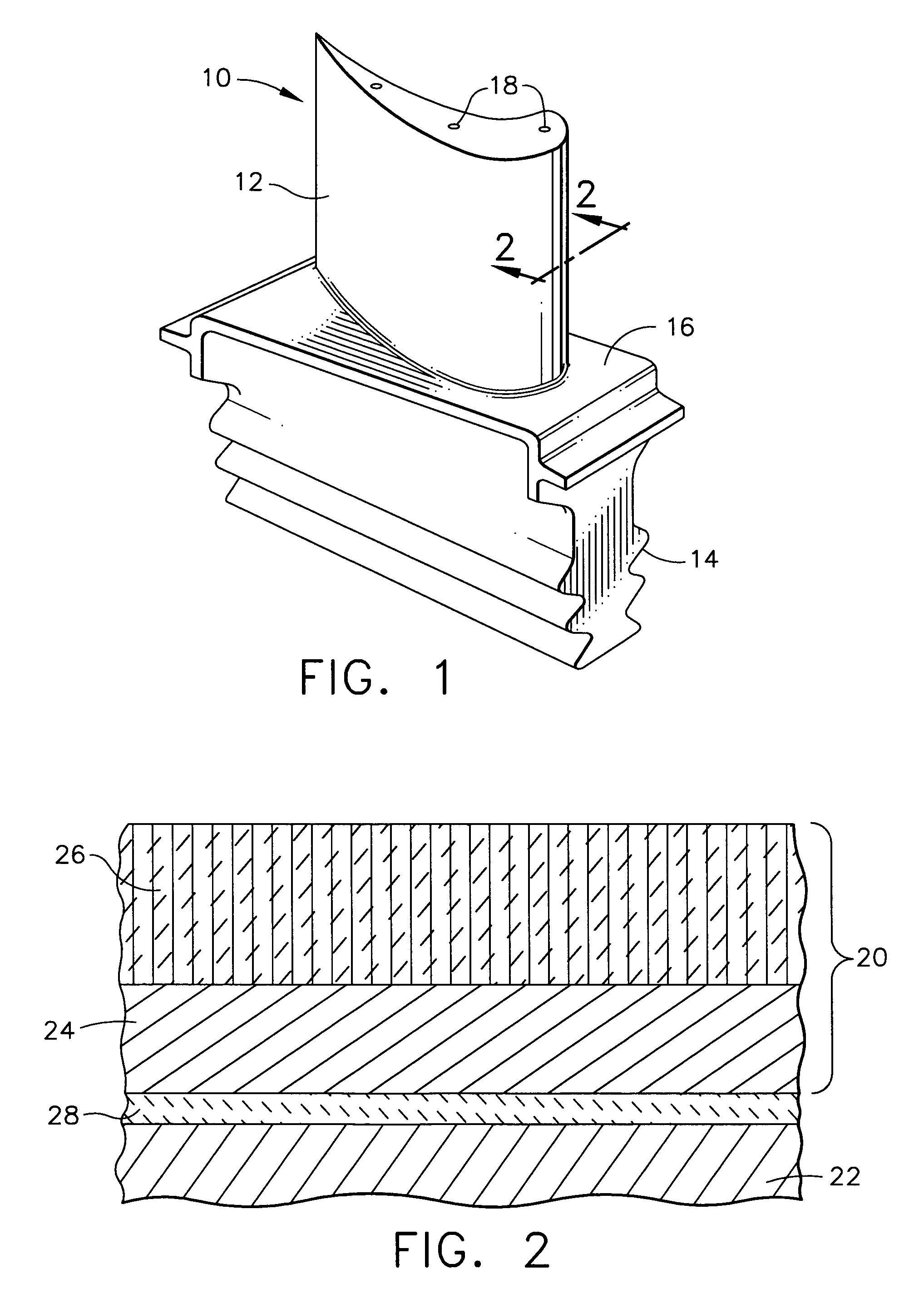Diffusion barrier and protective coating for turbine engine component and method for forming
a technology of turbine engine and barrier layer, which is applied in the direction of machines/engines, plasma techniques, natural mineral layered products, etc., can solve the problems of reducing the ability of the outer region to regenerate the protective alumina layer, preventing the formation of an adequate protective alumina layer, and undesirably consuming a portion of the wall
- Summary
- Abstract
- Description
- Claims
- Application Information
AI Technical Summary
Problems solved by technology
Method used
Image
Examples
example
[0052] A protective coating system of the invention comprising a diffusion barrier layer and a protective coating is formed on button specimens of a nickel-base superalloy known as René N5 having a nominal composition, in weight percent, of 7.5% Co, 7.0% Cr, 6.2% Al, 6.5% Ta, 5.0% W, 3.0% Re, 1.5% Mo, 0.15% Hf, 0.05% C, 0.004% B, 0.01% Y, with the balance nickel and incidental impurities. First, an aluminum oxide diffusion barrier layer about 1 micron thick is formed on the substrate by oxidizing the surface of the aluminum rich superalloy. The oxidation step is performed by heating the substrate to a temperature in the range of from about 900° C. to about 1150° C. for about two hours in air or in a controlled atmosphere, especially with a partial pressure of oxygen.
[0053] A thin flash layer (about 2 microns thick) of platinum is applied over the diffusion barrier layer by sputtering. Layers of platinum (about 76.2 microns thick), rhodium (about 12.7 microns thick), and palladium (...
PUM
| Property | Measurement | Unit |
|---|---|---|
| Temperature | aaaaa | aaaaa |
| Temperature | aaaaa | aaaaa |
| Time | aaaaa | aaaaa |
Abstract
Description
Claims
Application Information
 Login to View More
Login to View More - R&D
- Intellectual Property
- Life Sciences
- Materials
- Tech Scout
- Unparalleled Data Quality
- Higher Quality Content
- 60% Fewer Hallucinations
Browse by: Latest US Patents, China's latest patents, Technical Efficacy Thesaurus, Application Domain, Technology Topic, Popular Technical Reports.
© 2025 PatSnap. All rights reserved.Legal|Privacy policy|Modern Slavery Act Transparency Statement|Sitemap|About US| Contact US: help@patsnap.com


